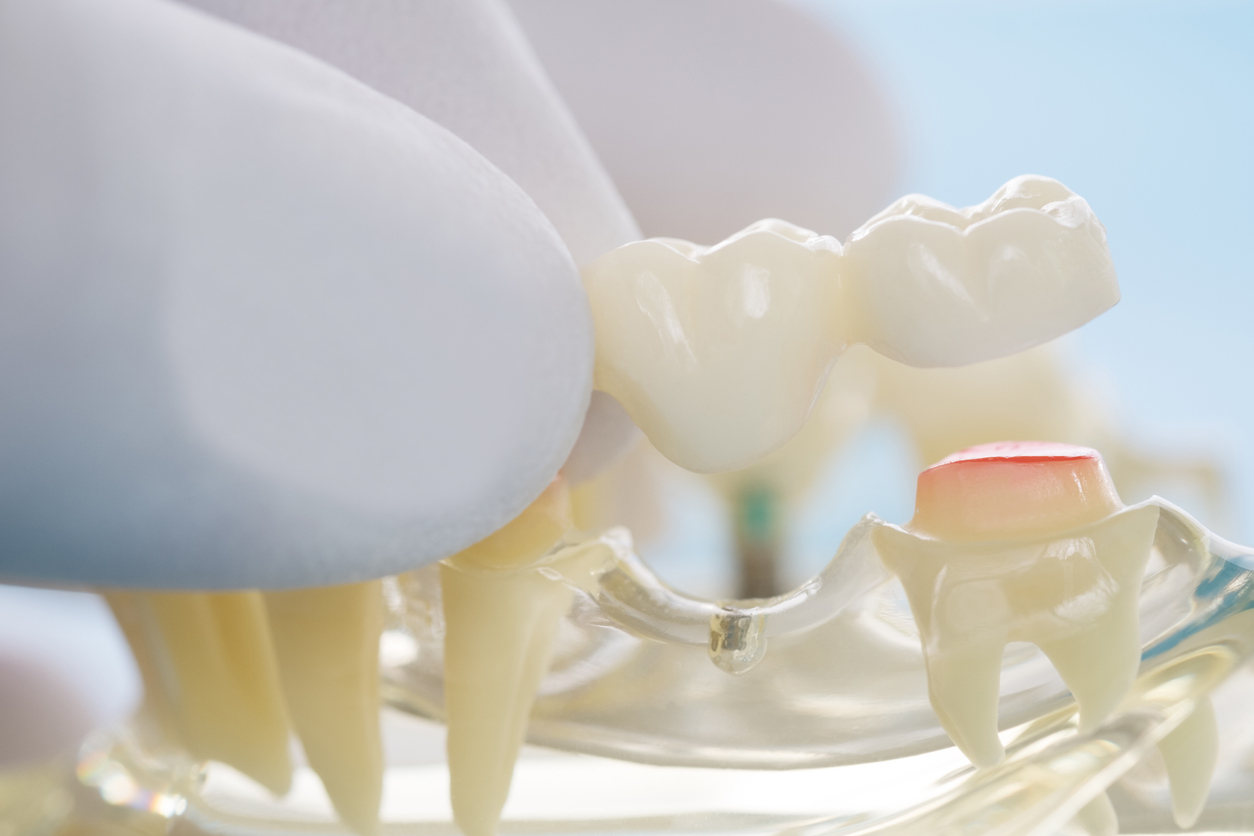Dental bridges replace missing teeth. They make it easier to chew and restore your ability to speak. They also correct your smile and protect your other teeth from shifting. But, how do you take care of your dental bridges? Taking preventative action is the best way to avoid dental bridge problems.
Find out the difference between partial dentures, implants, and dental bridges.
Make Sure Your Bridge Fits
Double-check to make sure your new dental bridge is a perfect fit while you are still at the dentist’s office. It should fit flush against your gumline. Ill-fitting bridges can leave spaces for food to get caught in. And you don’t want to get caught with rotting food under your dental bridge! It can cause bad breath and gum disease due to bacteria.
Avoid Chewing on ‘Forbidden’ Foods
People with a dental bridge should avoid chewing on certain foods. Ice, raw vegetables, and sticky candy can all dislodge your dental bridge. They can even damage the structure of the bridge so badly that you have to replace it. This is one of the easiest dental bridge problems to avoid.
Practice Good Oral Hygiene
Good oral hygiene not only prevents bacteria from forming. Good oral hygiene not only prevents bacteria from forming. It also helps with the bacteria’s by-products: plaque, tartar, and, calculus. These are in ascending order, with calculus being the hardest to remove. The next steps after that are gingivitis and periodontal disease.
Brush Twice Daily
Brush twice daily — no matter what. Use a toothbrush designed to clean all the hard-to-reach areas.
Floss Nightly
Flossing dislodges food and tartar stuck between your teeth. But be careful about flossing right after you get your dental bridge. During the healing period, it is easier to dislodge the bridge with floss.
Use Antiseptic Mouthwash
An antiseptic mouthwash like Colgate Total or Listerine can do a lot to prevent oral disease.
Try a Waterpick
This video explains how the waterpick is a good tool to rely on in addition to brushing and flossing. It pushes food and debris that even flossing leaves behind. Follow your water pick session with your antiseptic mouthwash.
Clean Your Teeth Well
Dental Cleanings
The Centers for Disease Control say you should get regular, professional dental cleanings. Dental cleanings prevent gingivitis and other oral diseases. It is important to know that “bridges do not decay but the teeth beneath them can”!
How to Clean Your Dental Bridge at Home
If your bridge is removable, you should remove and clean it daily. Colgate.com provides these instructions for cleaning a dental bridge:
- Stand over a sink full of water or over a folded towel to avoid breaking the bridge if you drop it.
- Brush the bridge with a soft-bristled toothbrush or a denture brush and cool water. You can also use denture cleaner. Don’t use abrasive household cleaners or toothpaste, which may scratch the bridge’s surface.
- Rinse with cool, clean water. Hot water can warp a removable bridge.
- Metal attachments on a removable bridge may rust if left in water or a denture cleaner overnight. Only do this if your dentist advises you to.
Keep Getting Regular Checkups
Scheduling regular checkups will help avoid dental bridge problems. Your dentist will also check to make sure all the pieces are intact. Visiting your dentist for checkups helps prevent gum disease and other oral diseases.
Pearl Dental
The dentists at Pearl Dental in Pomona specialize in implant and cosmetic dentistry. Dental bridges are a good option for replacing missing teeth. With proper care, your bridges will enhance your health and keep your smile looking great for years to come. At Pearl Dental, you can choose from solid gold bridges, porcelain bridges fused to a gold base, or metal-free porcelain bridges for ultimate effect. Don’t let missing teeth make you afraid to smile. Call Pearl Dental today at 909-839-1004 or click to schedule an appointment!


